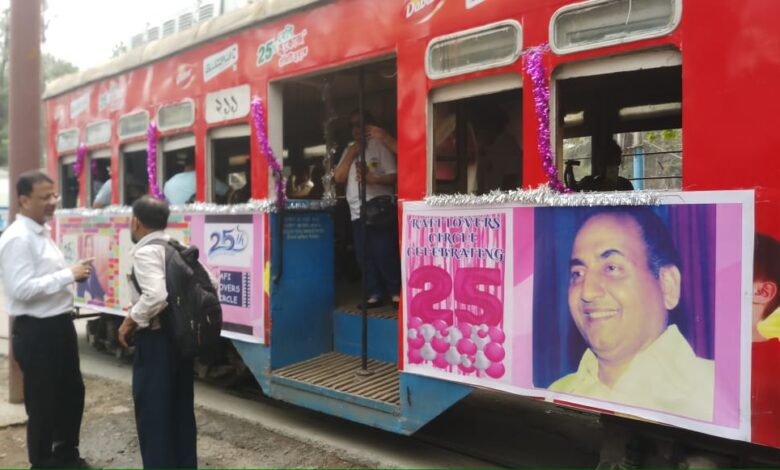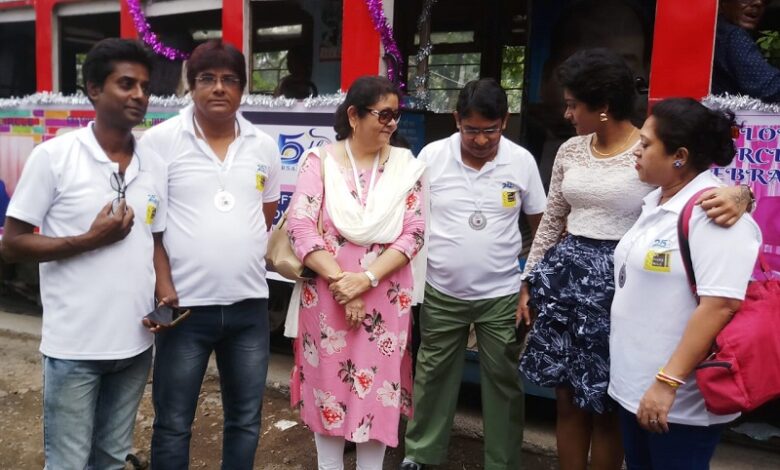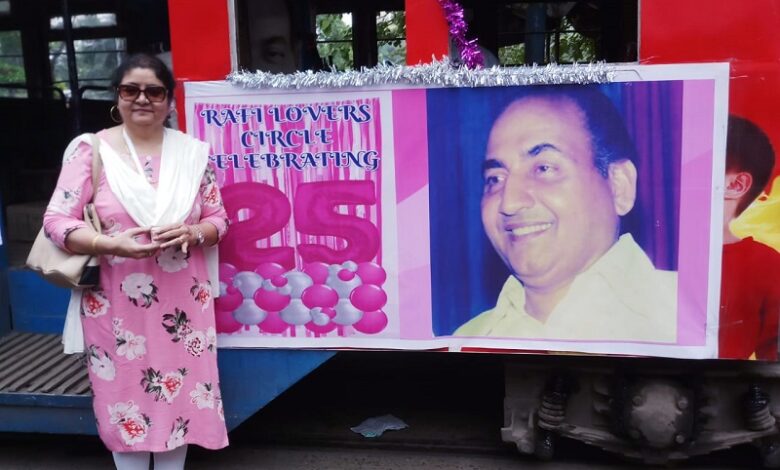The road to safety and security for migrant workers
News Mania Desk / Piyal Chatterjee / 13th january 2025
During the 2020 COVID-19 lockdown, at least 2.6 million migrant laborers were stuck throughout India. Rejected by employers and landlords, lacking social security, health benefits, and emergency assistance, roughly 1 million returned home, with many walking along highways. We must not postpone implementing policies, processes, and systems to protect their human rights until another crisis occurs. Regions with significant migrant communities ought to create a structured system to assist migrant laborers, both domestically and internationally.
In 2011, India recorded 456 million internal migrants, which is about 38 percent of the nation’s population. The majority of domestic migrants relocate from their villages to other rural regions or urban areas because of the unfair distribution of resources, services, and opportunities or to escape from violence and severe weather events. In India, internal migrants frequently find informal employment in unorganised sectors and are susceptible to exploitation, harassment, and discrimination. They don’t have access to fundamental housing, social security, health benefits, or emergency aid, receive low salaries, and are employed in unsafe and unstable work conditions. In times of crisis, migrant workers undertake perilous trips back home.
Although the rate of internal migration can vary, it is evident that migration is definitely a permanent phenomenon. Indeed, with the impending climate crisis and concerns over food and water scarcity, distress migration is expected to rise. It is essential to establish a safety net for individuals who relocate in pursuit of employment opportunities.
To create a global compact for safe, orderly, and regular migration, the United Nations General Assembly approved the New York Declaration for Refugees and Migrants in September 2016. In India as well, it is crucial to establish measures that lessen the vulnerability of internal migrants and enhance their ability to access remedies under applicable labor regulations and government welfare programs.
In 2020, the PHIA Foundation established a control room in the government for migrants returning home to Jharkhand. Numerous civil society organizations (CSOs) participated voluntarily in this initiative. Slowly, the state government assigned its own team to this call centre, resulting in the creation of the State Migrant Control Room (SMCR). Drawing on the experiences and insights gained from the SMCR, the Government of Jharkhand launched the Safe and Responsible Migration Initiative (SRMI) in December 2021. The PHIA Foundation launched its pilot program in the three districts heavily burdened: Gumla, Dumka, and West Singhbhum.
The SRMI has provided valuable insights into methods and best practices that can assist the country in safeguarding and promoting the rights of migrant workers while establishing an effective support system for them. Here are a few of them:
Single window access
On the first day of the pandemic, the helpline for stranded migrants from Jharkhand got 6,000 emergency calls. Currently, it receives an average of 330–400 calls each day. The SMCR provides the dispersed and fragmented migrant community with a unified point of access for their concerns. It assists employees with issues concerning compensation for accidents and natural fatalities, remedying wage infractions, and rescue operations for bonded labour, child labour, human trafficking, and cases of missing individuals. Migrant workers typically need legal support and help when pursuing compliance from employers under the Inter-State Migrant Workmen (Regulation of Employment and Conditions of Service) Act, 1979, which ensures fair pay and rights. If an employee is stuck during a natural or man-made disaster, the helpline can provide urgent assistance.
A centralized system can provide migrant workers with access to government programs, identification and registration services, training and skill development, and potential job placements. The SMCR, for example, assists employees in enrolling in government initiatives like the Building and Other Construction Workers (BOCW) Scheme.
Origin and target data
There is an obvious deficiency of information regarding domestic migrants. In 2020, we utilized a program at the SMCR to log details regarding all callers. As time passed, we gathered information on the source districts and blocks—from where migrants originated—and destination states—to which they traveled for employment. According to the information gathered by the control room, it is understood that around 1.47 million migrants from Jharkhand were trapped in 2020. The patterns reveal that a significant number of migrants from Jharkhand leave Dumka, Giridih, Hazaribag, Godda, Palamu, Garhwa, and Deoghar districts, heading to states such as Maharashtra, Gujarat, Tamil Nadu, Kerala, Telangana, Delhi, Andhra Pradesh, Haryana, and Uttar Pradesh, respectively. They mainly serve as laborers in construction, manufacturing, or textiles, as well as machine operators, tailors, drivers, carpenters, electricians, and more.
Gathering this information on migrants nationwide is crucial. Mapping exercises for sources and destinations can enhance systems that more effectively support migrants. Examining and interpreting the data can uncover which areas require specific types of intervention. For example, in regions with significant migration, billboards, murals, and brochures can provide individuals with information about their rights and entitlements. Awareness stations can be established at pre-departure locations like train stations or bus terminals. Information about particular skills in a source area can result in upskilling initiatives and job connections. Focused initiatives can also promote increased registration of migrant workers in particular regions.
Registration
Our information indicates that merely around 20–25 percent of migrant workers sign up with the authorities. This significantly obstructs their access to remedies, rights, and government programs. It likewise impacts their likelihood of being saved in emergency situations.
Numerous government initiatives exist for the rights and welfare of migrants and workers in the informal sector. For example, the Inter-State Migrant Workmen Act includes provisions for travel allowances, healthcare services, complimentary lodging, bonuses, and benefits like ESI and PF. However, the majority of individuals do not know about these plans. A few of these demand a premium that specific groups cannot pay. However, for some, employees are required to only sign up with the government.
A control room can assist migrants in registering on the central government’s e-Shram portal or with state-specific databases like the Shramadhan website of the Jharkhand government. The adherence of employers to regulations regarding migrant workers must also improve. According to the Inter-State Migrant Workmen Act, any employer or contractor that employs over five individuals must legally secure a licence and submit the details of the interstate workers they hire. Governments from states that usually provide labor could consolidate demand in this manner and assist with placement.
Awareness
Raising awareness of the significance of registration among migrant workers necessitates ongoing community involvement. Communities, village councils, members of Panchayati Raj Institutions (PRI), and traditional village leaders can promote discussions about safe and responsible migration. PRIs can serve as custodians, while gram panchayats can keep track of workers who migrate for employment. Panchayats can also organize orientation programs that inform migrant workers about their legal rights, workplace rules, and options for seeking help in cases of exploitation or discrimination, while also assisting them in making informed choices.
Cooperation
Considering the scale, form, and characteristics of migration in India, cooperation between the government and civil society organizations is crucial for ensuring it is safe and responsible. In Jharkhand, the SMCR required collaboration between government agencies and civil society to organize support, counselling, and rehabilitation across various regions of the state.
Small or micro-organizations can focus on migrant-related matters and be united on a platform, particularly in times of crisis. Local authorities play a vital role in sharing information and gathering data. Interstate MoUs between origin and receiving states can formalize and guarantee social protection for migrant laborers. During the pandemic, PHIA asked the chief secretary of Jharkhand to contact the chief secretaries of other states to help stranded migrants. State governments that have significant migrant communities ought to establish subcommittees to create welfare programs for migrants.
In 2021, NITI Aayog, the government’s policy research institute, created a framework for migrants. The National Action Plan for Migrant Workers, developed by representatives from different ministries, subject matter experts, and civil society organizations, establishes a framework for a rights-based approach. However, the journey forward is extensive and necessitates the collaboration of numerous stakeholders. Only ongoing large-scale collaboration can improve outreach and support services for migrant workers.












